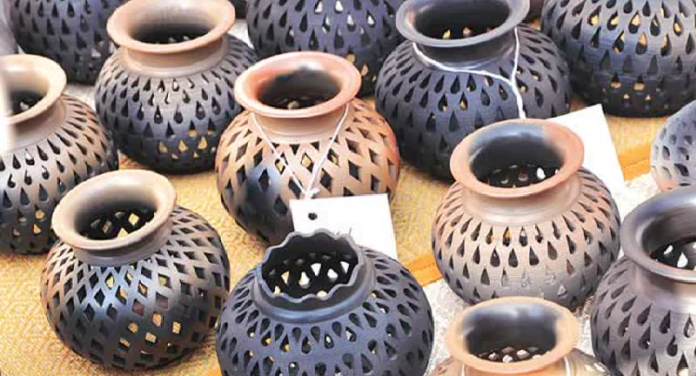
Kagzi pottery is a type of traditional pottery that developed in the Indian state of Rajasthan, namely in Alwar. It is an ancient craft that has been passed down from generation to generation for ages. Kagzi pottery is recognized for its delicate and detailed designs, and it is created through a unique method involving a specific type of paper.
The History of Kagzi Pottery:
Kagzi pottery originates in the Rajasthan village of Alwar. The Mughals, who controlled India from the 16th through the 18th centuries, are thought to have brought the technique to the region. The Mughals were known for their appreciation of art and culture, and they promoted the development of numerous art forms in the areas they conquered.
The Process of Making Kagzi Pottery:
The process of making Kagzi pottery involves a unique method of using paper as a mold. The paper is made by hand from cotton rags, which are soaked in water and then beaten into a pulp. The pulp is then spread out on a flat surface and allowed to dry. Once the paper is dry, it is cut into the desired shape and size.
The next step is to mix the clay with water and then pour it into the paper mold. The clay is then shaped by hand to create the desired design. Once the clay has dried, the paper mold is removed, leaving behind the delicate and intricate design.
The final step is to fire the pottery in a kiln. The firing process strengthens the clay and gives it a unique color and texture. The colors used in Kagzi pottery are derived from natural pigments, and the designs are often inspired by nature.
The Significance of Kagzi Pottery:
Kagzi pottery is not just a craft; it is also a way of life. The craft is deeply rooted in the culture and traditions of Rajasthan. It is an important source of income for many families in the region, and it is also a way of preserving the rich cultural heritage of the state.
Kagzi pottery is also significant because of its environmental sustainability. The use of paper molds instead of traditional molds made of plaster or clay means that there is less waste generated during the pottery-making process. The paper molds can also be reused several times, further reducing the environmental impact of the craft.
It is an important source of income for many families in the region, and it is also a way of preserving the rich cultural heritage of the state. The use of paper molds in the pottery-making process makes it environmentally sustainable and reduces the amount of waste generated. Overall, Kagzi pottery is an important part of Rajasthan’s cultural identity and a testament to the creativity and ingenuity of its people.

